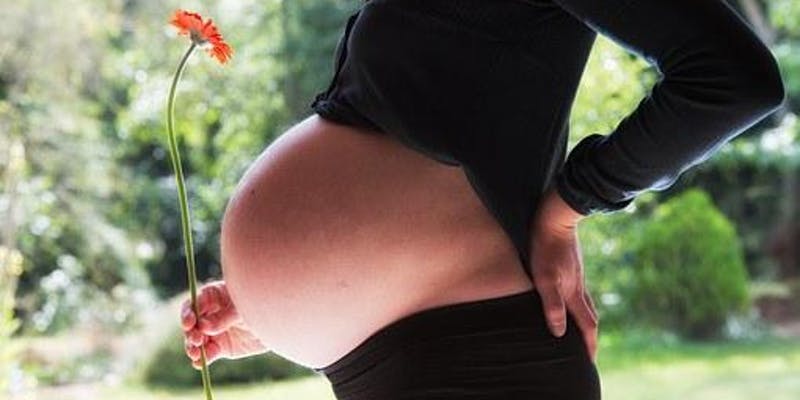We have welcomed Mairead Hallisey of Balance North as a guest blogger to talk about exercise during pregnancy. As you know we are also the home of The HypnoBirthing Collective owned by our head Naturopath and NNT owner Candace Borg.
This means is that we have a lot of pregnant mumma’s coming through that we are here to nurture and support. So we thought we would talk all about the exercise and pregnancy.
Should I exercise during pregnancy? Is it safe?
In the past, exercise was advised against during pregnancy due to believed adverse neonatal or pregnancy outcomes. However, we now know that the opposite is true and exercise is medically advised throughout pregnancy due to the plethora of benefits for both parent and bub.
There are many academic and clinical global guidelines which advice of the safety and importance of exercise throughout pregnancy, including recommendations from the highly esteemed American College of Obstetricians and Gynaecologists (ACOG).
The ACOG position statement advises the following:
- Physical activity and exercise in pregnancy are associated with minimal risks and have been shown to benefit, although some modification to exercise routines may be necessary because of normal anatomic and physiologic changes and fetal requirements.
- A thorough clinical evaluation should be conducted before recommending an exercise program to ensure that a patient does not have a medical reason to avoid exercise.
- People with uncomplicated pregnancies should be encouraged to engage in aerobic and strength- conditioning exercises before, during, and after pregnancy.
- Obstetrician–gynecologists and other obstetric care providers should evaluate pregnant patients with medical or obstetric complications carefully before making recommendations on physical activity participation during pregnancy. Activity restriction should not be prescribed routinely as a treatment to reduce preterm birth.
There are some instances where exercise is contraindicated in pregnancy and we advise consulting with your physician if you are concerned about this. However, exercise will be safe for the large majority of women.
The ACOG contra-indications include:
- Hemodynamically significant heart disease
- Restrictive Lung Disease
- Severe anaemia
- Premature labour during current pregnancy
- Ruptured membranes (i.e. waters broken)
- Multiple gestation at risk for premature delivery
- Persistent 2nd or 3rd trimester bleeding
- Incompetent cervix / cerclage
- Placenta Previa after 26/40
What are the benefits of exercise during pregnancy?
There are many proven benefits of exercising during pregnancy:
- Controlling gestational weight gain
- Reduces risk of preeclampsia/ gestational hypertension
- Reduces the risk of gestational diabetes and macrosomia
- Improves mood and sleep
- Prevents and reduces pelvic girdle and lower back pain during pregnancy (more on this later).
- Body preparation for the physical demands of labour
- Reduces fatigue
- Reduces swelling in the limbs
- Relief from nausea and vomiting
And more…
(Santaella et al 2020; Bianchi 2020; Hollenback 2013; Nascimento 2012)
 What about my low back pain and pregnant body?
What about my low back pain and pregnant body?
During pregnancy, our bodies go through amazing physical change to prepare for labour and cater for a growing bump. However, a common feature of pregnancy is lower back pain (LBP) and pelvic girdle pain (PGP). One study showed that up to 50% of people experience LBP throughout their pregnancy (Katonis 2011). Although these conditions are common, there are many treatment options available and you do not need to abide or put up with this pain or discomfort.
Exercise is one proven method to help treat and prevent LBP and PGP in pregnancy. It is recommended that pregnant people participate in an individualised exercise program, which may include abdominal strengthening exercises, pelvic floor muscle training and targeted pain-reliving stretches/ mobility. General low-impact exercises such as swimming, stationary cycling and walking can also be of benefit.
What about my pelvic floor?
It is common for most people to have a weak and injured pelvic floor after pregnancy as childbirth causes stretch to our pelvic area, including pelvic floor muscles, pelvic ligaments and fascia. Similar to other muscle injuries it is important that we follow a specific rehabilitation plan for these muscles to ensure they recover.
Pelvic floor exercises are strongly recommended before, during and after pregnancy. There is grade A (level 1) evidence that pelvic floor muscle training prevents and reduces symptoms of pelvic floor dysfunction (Wesnes & Lose 2013). Pelvic floor dysfunctions can include stress and urinary incontinence.
A physiotherapist can help guide and teach you how to exercise your pelvic floor and keep these vital muscles strong.
Ok, I am ready to exercise – where to from here?
Clinical guidelines and recommendations advice that pregnant people participate in at least 150 minutes of moderate-intensity exercises per week. Exercise can be broken up between strength and aerobic exercises.
For people who were previously sedentary, pregnancy can be a great time to commence gentle exercise. For people who were previously active before pregnancy, it is advised to continue exercise during pregnancy. We advise seeking guidance for a medical professional, with specific pregnancy-related training to help guide an appropriate exercise plan for you.
At Balance North, our physiotherapists are specifically trained to help guide you through an individualised prenatal or postnatal exercise plan. We also offer specialised prenatal/ postnatal physio-led group exercise classes to cater to your needs. These small group classes are a combination of physiotherapy techniques and Pilates exercises led by a physiotherapist in a supportive environment.
Please reach out to us if you would like further guidance or information.
References
- American College of Obstetricians and Gynecologists. (2015). Physical activity and exercise during pregnancy and the postpartum period. Committee Opinion No. 650. Obstet Gynecol, 126(6), e135-142.
- Bianchi, C., de Gennaro, G., Romano, M., Baronti, W., Aragona, M., Battini, L., … & Bertolotto, A. (2021). Exercise during pregnancy: how much active are pregnant women at risk of gestational diabetes despite few contraindications?. Gynecological Endocrinology, 37(2), 101-104.
- Hollenbach, D., Broker, R., Herlehy, S., & Stuber, K. (2013). Non-pharmacological interventions for sleep quality and insomnia during pregnancy: a systematic review. The Journal of the Canadian Chiropractic Association, 57(3), 260.
- Katonis, P., Kampouroglou, A., Aggelopoulos, A., Kakavelakis, K., Lykoudis, S., Makrigiannakis, A., & Alpantaki, K. (2011). Pregnancy-related low back pain. Hippokratia, 15(3), 205.
- Nascimento, S. L., Surita, F. G., & Cecatti, J. G. (2012). Physical exercise during pregnancy: a systematic review. Current Opinion in Obstetrics and Gynecology, 24(6), 387-394.
- Perales Santaella, M., Valenzuela Ruiz, P. L., Barakat, R., Cordero, Y., Peláez, M., López, C., … & Lucía Mulas, A. (2020). Gestational Exercise and Maternal and Child Health: Effects until Delivery and at Post-Natal Follow-up.
- Wesnes, S. L., & Lose, G. (2013). Preventing urinary incontinence during pregnancy and postpartum: a review. International urogynecology journal, 24(6), 889-899.

